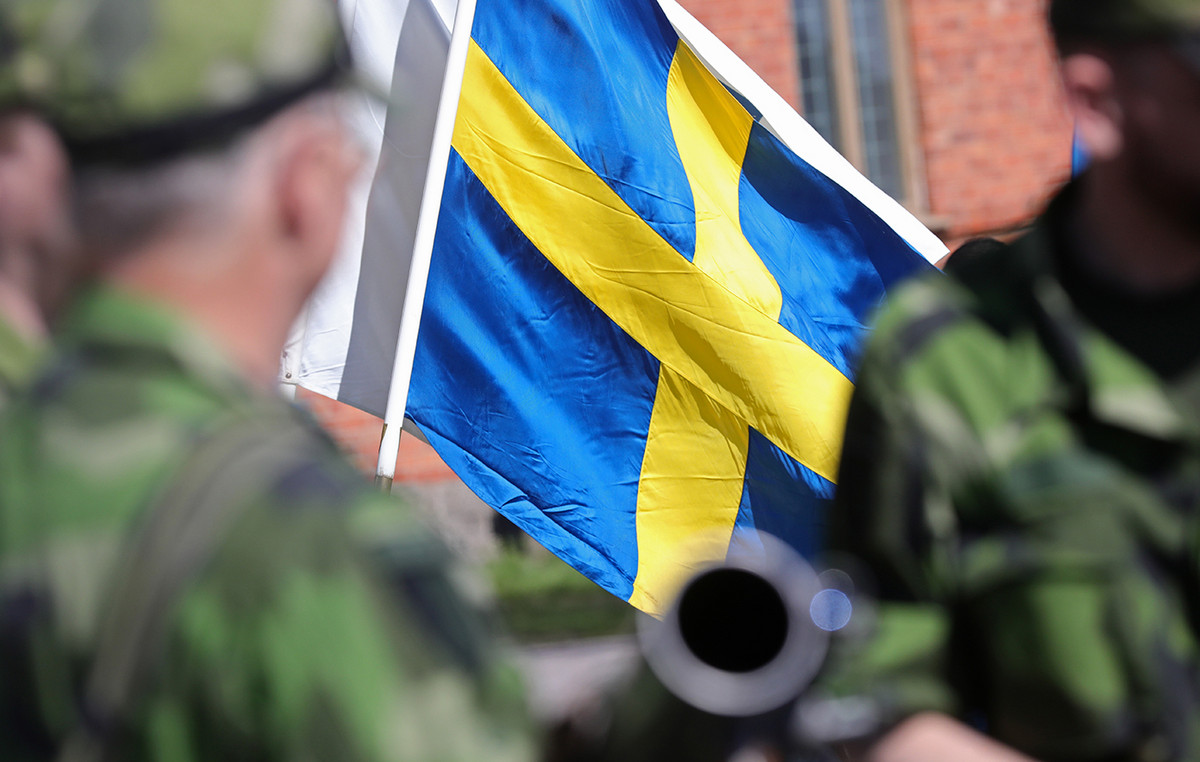The exact location where the hostages are and the human cost challenge Israel’s possible entry into the Gaza Strip, according to experts interviewed by the CNN .
The number of hostages held by Hamas is at least 97 people, who are spread across Gaza.

Israel has several obstacles to assess and eventually face if it decides to invade the Gaza Strip, says Danielle Ayres, professor of International Politics at the Federal University of Santa Catarina (UFSC).
The expert assesses that the beginning of the incursion “is one of the most difficult decisions that Israel will have to make”, but that it is practically certain to happen, highlighting statements by the Prime Minister of Israel, Benjamin Netanyahu, and the Minister of Defense, Yoav Gallant, defending the counterattack.
VIDEO – Invading Gaza is one of the most difficult decisions Israel will have to make, says professor
“What Israel’s goal is through this land incursion is to neutralize as much of Hamas as possible and somehow recover the hostages”, points out Ayres, who believes that this should only be done if all rescue attempts through dialogue fail.
“[Israel precisa] know where these hostages are being held in order to carry out a quick raid with as little damage as possible”, he continues.
Therefore, the expert assesses that the attack must not involve an intention to annex the territory. “Until now, nothing from a strategic point of view has suggested this,” she explains.
However, the operation would be difficult for Israeli forces, which is the reason for the delay in announcing the invasion. “The level of human cost that Israel can incur from its military effort is very high”, points out Ayres.
According to International Relations specialist Uriã Fancelli, the conflict against Hamas could take on greater proportions if the land incursion into Gaza begins, with the operation being unpredictable for the Israel Defense Forces (IDF).
“The complicated thing about all this is precisely not knowing what they will find once they enter [em Gaza]. There may be pitfalls. [Com a invasão]the number of deaths will be immense”, he says.
Fancelli explains that Israel sees the ground operation as “one of the only alternatives” to control Hamas and rescue Israeli civilians kidnapped by the group.
VIDEO – Analyst: Israel doesn’t know what it might find if it invades the Gaza Strip
Worsening of the situation
Uriã Fancelli draws attention to the fact that, even without the land invasion, the war has serious proportions.
“When there are intentional attacks on civilian structures and this leaves people dead, it is a war crime”, says the expert, citing Israeli attacks.
If the situation worsens further, Fancelli explains that the international community may begin to condemn Israel, leading to an eventual withdrawal.
“It is important that Israel calms down a little and sends a message just by positioning its weapons, reservists and the contribution from the United States so as not to lose support now. It seems that this war will be long and the country alone will not be able to fight”, argues the internationalist.
Therefore, according to Danielle Ayres, to enter Gaza, Israel would need to cease bombings.
The problem is that this way Hamas forces could reorganize and prepare for defense against Israeli forces.
Once inside the Gaza Strip, the Israeli army would face a demographic problem, according to the professor.
“The greatest difficulty is entering a dense territory”, reinforces Ayres, who highlights the large population, the narrow streets and the amount of debris as obstacles for Israel to be able to enter Gaza.
This factor could be even more damaging to Israeli forces if one takes into account the failure of Israeli intelligence to follow the enemy’s evolution.
“We didn’t have the dimension of the strategic potential that Hamas was developing”, pointed out the professor. “Hamas fights urban guerrilla wars. When Israel enters their territory, it is facing a region that the group is familiar with and may have prepared for ambushes.”
VIDEO – Hamas must be destroyed like the Islamic State, says Netanyahu
Previous raids
In January 2009, the team at CNN hitched a ride on a convoy of ambulances heading from Rafah in the south of the Gaza Strip towards Gaza City on the coast. The doctors allowed them to go on condition that the journalists went on their stretchers.
During the journey, a doctor shouted: “Get down!” as the ambulance approached the Israeli checkpoint. Through the front window, it was possible to see tanks on the side of the road, nervous Israeli soldiers raising their weapons as they approached.
After a brief conversation with the ambulance doctors, the soldiers waved off without inspecting the vehicles.
The raids were part of “Operation Cast Lead”, a large-scale Israeli action in the Gaza Strip that took place between 2012, 2014, 2021 and 2022.
It was the deepest Israeli ground military offensive into Gaza since its withdrawal from the area in 2005.
Afterwards, Israeli troops largely avoided the most urbanized and populated areas, especially Gaza’s eight crowded refugee camps.
They knew very well that entering the narrow alleys of camps like al-Shati, one of the busiest, would be risky. Its focus was on controlling the periphery of urban areas.
Israel’s tactics have always been to move quickly, control as much territory as possible, but avoid street-to-street, house-to-house fighting where a weaker adversary might gain the upper hand. Entering Gaza’s urban areas, however, would bring an entirely new element to the fight.
Right now, Israeli forces are clashing with Hamas. But Gaza is home to many groups fighting for the freedom of Palestinians, including Islamic Jihad, the Popular Front for the Liberation of Palestine (PFLP), the Democratic Front for the Liberation of Palestine (FDLP). They do not have the manpower or weaponry of Hamas, but they are numerous enough to fight for their demands.
In March 2008, the reporter for CNN Ben Wedeman went to Gaza to cover an Israeli incursion into the north, this time dubbed “Hot Winter”, yet another attempt to stop rocket launches from Gaza.
During this period, Hamas completely controlled the Gaza Strip, having expelled the rival Fatah faction the previous year. But when he arrived at the area where Israeli forces were trying to advance, they were not Hamas fighters, but armed men from the Popular Front for the Liberation of Palestine who were fighting street battles with Israeli troops.
They darted in and out of alleys, ran through the streets with grenade launchers and Kalashinkov assault rifles.
The young people were almost dizzy with excitement. They finally had the opportunity to fight Israeli troops on their own territory. Eventually, the Israelis withdrew. Rocket firing continued.
VIDEO – Israel: Aid to Gaza depends on the release of hostages
Going back to the summer of 1982, when Israel invaded Lebanon in pursuit of the Palestine Liberation Organization (PLO), Israeli forces went all the way to Beirut and then stopped on the outskirts, establishing a siege very similar to the one announced last Monday. fair (9) by the Israeli Minister of Defense, Yoav Gallant.
Already at that time it was clear that entering Beirut, especially the Palestinian refugee camps, would be a deadly mission for everyone.
During the ensuing siege, Israeli warplanes and artillery attacked West Beirut, the capital of Lebanon, but ground troops remained outside Beirut proper.
Ultimately, under American pressure, an agreement was worked out under which Palestinian fighters would evacuate Beirut and Lebanon toward Yemen, Tunisia and elsewhere.
It was only after they left that Israeli troops took control of the western part of the city. Shortly thereafter, in September 1982, with Israel in control of West Beirut, the Israeli military, under the leadership of then Defense Minister Ariel Sharon, allowed its right-wing Lebanese Christian allies, the Kataib, to enter the refugee camps of Sabra and Shatila and massacred 1,000 civilians who could no longer defend themselves because the men of fighting age and their weapons had left as part of the US-brokered deal with the PLO.
The Israeli military has already mobilized 300,000 reservists for what is now believed to be an unprecedented incursion into Gaza – and perhaps, some speculate, a reoccupation of the enclave – following the surprise Hamas attack on Saturday (7), which killed more than 1,000 people in Israel.
What awaits is a Hamas that demonstrated ruthlessness in its attack on Saturday and a level of military capability far beyond what was previously thought. You are probably well prepared for the next phase of this war.
Since the weekend, Israel has launched hundreds of attacks on Gaza, turning some areas into wastelands. In the process, hundreds of Palestinians, including many civilians, were killed. And this is just the initial phase of this war.
If it happens, the ground operation will be much more bloody and destructive.
Israeli forces will also have to be aware that spread across Gaza are more than a hundred Israelis – soldiers and civilians, including women and children – held captive by Hamas.
And while no one outside Hamas knows where they are being held, they are likely to be in areas that are most difficult for Israeli forces to access, possibly in overcrowded refugee camps.
As eager as Israel’s leaders are to deal a fatal blow to Hamas, it will come at a heavy price. For all.
See also: Israel intensifies bombings against Gaza
*Published by Douglas Porto, with information from João Nakamura
Source: CNN Brasil
Bruce Belcher is a seasoned author with over 5 years of experience in world news. He writes for online news websites and provides in-depth analysis on the world stock market. Bruce is known for his insightful perspectives and commitment to keeping the public informed.







